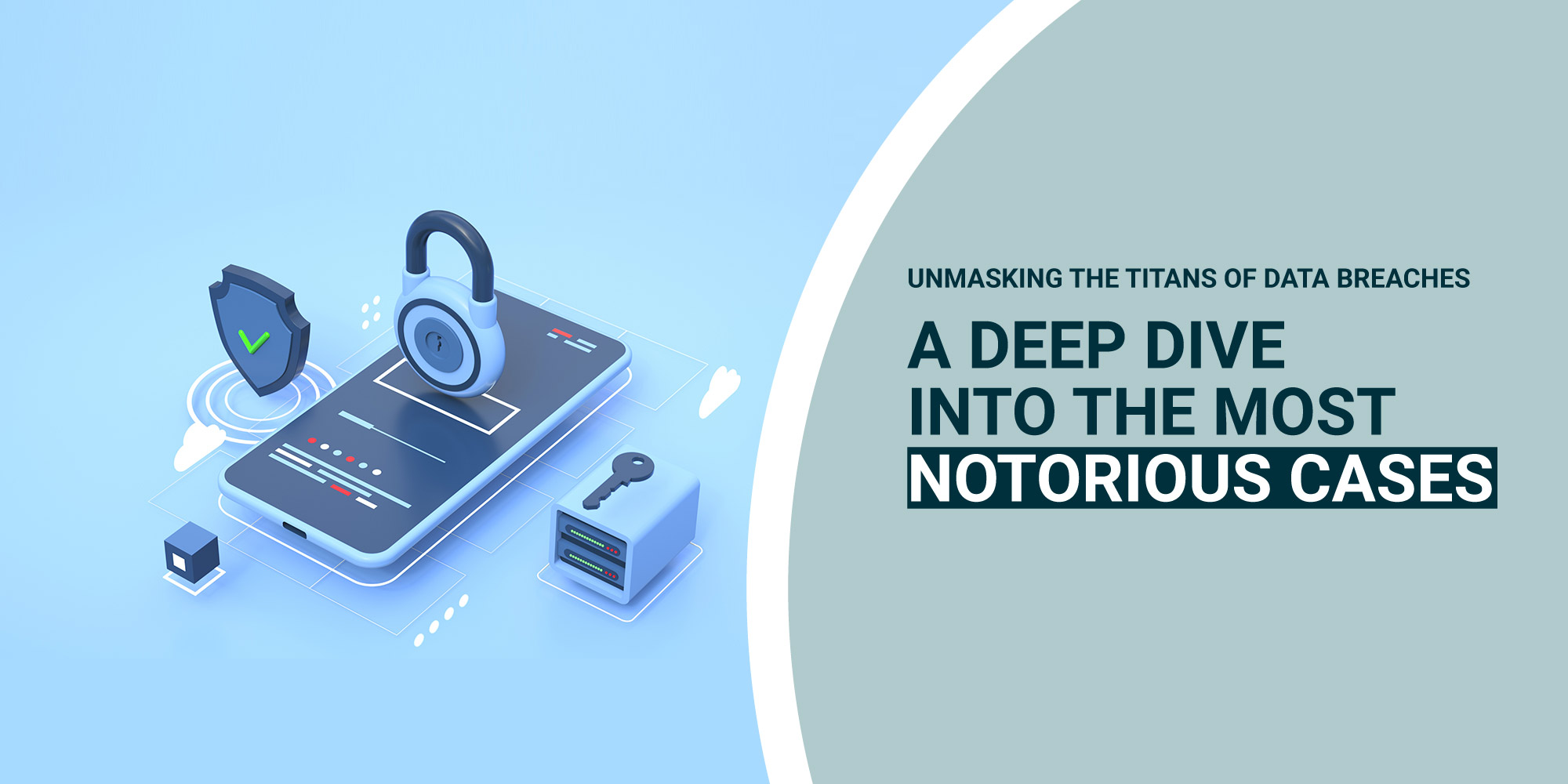Data breaches have become increasingly common in recent years, with high-profile incidents affecting millions of people. These breaches can have a devastating impact on individuals and businesses alike, leading to identity theft, financial fraud, and reputational damage.
In this blog post, we will take a closer look at four of the highest-profile data breaches in history: Marriott International, Facebook, LinkedIn, Yahoo and Target. We will discuss how each company faced the challenge of the breach and how they overcame it.
Data Breaches Case Study 1: Facebook/Cambridge Analytica – 2018
The Breach: The Facebook and Cambridge Analytica scandal exposed the data of over 87 million Facebook users, which was harvested and misused for political purposes.
Challenges Faced:
- Public Outcry: Facebook faced severe backlash from users, governments, and media worldwide.
- Regulatory Scrutiny: They were investigated by multiple regulatory bodies, including the U.S. Congress and the European Parliament.
- Privacy Concerns: The breach ignited a broader conversation about data privacy and user consent.
Overcoming the Challenges:
- Apologies and Reforms: Mark Zuckerberg publicly apologized and initiated reforms to improve data privacy and security on the platform.
- Regulatory Compliance: Facebook worked towards complying with new privacy regulations like GDPR.
- Transparency Initiatives: They launched transparency tools to show users how their data was being used.
Case Study 2: Yahoo – 2013
The Breach: Yahoo suffered two massive data breaches in 2013 and 2014, but they weren’t publicly disclosed until 2016. These breaches compromised the data of over 3 billion user accounts, making it one of the largest breaches in history.
Challenges Faced:
- Delayed Disclosure: The delayed disclosure of the breaches eroded trust and raised questions about Yahoo’s security practices.
- Legal Consequences: Yahoo faced numerous lawsuits and regulatory investigations.
- Impact on Acquisition: The breaches had a significant impact on Yahoo’s acquisition by Verizon.
Overcoming the Challenges:
- Acknowledgment: Yahoo acknowledged the breaches, worked on identifying affected accounts, and encouraged users to change their passwords.
- Security Improvements: The company invested in cybersecurity enhancements to prevent future breaches.
- Transparency: Yahoo communicated openly with users about the breaches and collaborated with law enforcement agencies during investigations.
Case Study 3: Target – 2013
The Breach: The Breach: In late 2013, Target suffered a data breach that exposed the credit and debit card information of over 40 million customers, along with the personal information of around 70 million customers.
Challenges Faced:
- Holiday Timing: The breach occurred during the busy holiday shopping season, amplifying its impact.
- Loss of Customer Trust: Target’s reputation took a hit, and customers lost trust in the retailer’s ability to protect their data.
- Regulatory Scrutiny: Target faced investigations from various regulatory bodies.
Overcoming the Challenges:
- Immediate Response: Target acted swiftly to contain the breach and remove malware from its systems.
- Enhanced Security: The company invested in improved cybersecurity measures, including chip-and-pin technology.
- Communication: Target communicated openly with customers, offered free credit monitoring, and worked on rebuilding trust.
Case Study 4: Marriott International – 2018
The Breach: In 2018, Marriott International announced a data breach that exposed the personal information of around 500 million guests. This breach was a result of a long-running intrusion into Starwood Hotels’ guest reservation system.
Challenges Faced:
- Magnitude: The sheer number of affected individuals and the international scope of the breach posed immense challenges.
- Regulatory Fines: Marriott faced significant fines under the GDPR.
- Reputation Damage: The breach damaged the reputation of a well-known hotel chain.
Overcoming the Challenges:
- Notification and Support: Marriott promptly notified affected guests and offered support through a dedicated website and call center.
- Enhanced Security Measures: The company implemented improved security measures and conducted a comprehensive security audit.
- Cooperation: Marriott cooperated with law enforcement agencies and worked closely with regulators to address the incident.
Case Study 5: LinkedIn – 2021
In 2021, LinkedIn revealed that a data breach had affected over 700 million of its users. The breach was caused by a data scraping attack, in which attackers used a bot to scrape data from LinkedIn’s website. The stolen data included names, email addresses, phone numbers, and job titles.
Challenges Faced
- Initial Detection: The breach came to light when a hacker named “Peace” offered 117 million LinkedIn passwords for sale on the dark web. LinkedIn swiftly launched an investigation.
- Assessing the Scope: LinkedIn’s security team worked tirelessly to gauge the extent of the breach. Understanding the scale was crucial in mounting an effective response.
- Mandatory Password Resets: To mitigate damage, LinkedIn initiated mandatory password resets for all affected accounts, thwarting unauthorized access.
- User Notifications: LinkedIn promptly informed affected users, urging them to change passwords and activate two-factor authentication to boost security.
- Collaborating with Authorities: LinkedIn collaborated closely with law enforcement agencies to track down the hackers and gain insights into their motives.
Overcoming the Challenges:
Enhanced Authentication: LinkedIn fortified user authentication, implementing multi-factor authentication (MFA) to deter unauthorized access.
Data Encryption: The platform beefed up data encryption, ensuring secure storage and transmission of user information.
Regular Security Audits: Routine security audits were introduced to identify and fix vulnerabilities proactively.
User Education: LinkedIn launched awareness campaigns, educating users about online security best practices.
Legal Pursuit: LinkedIn pursued legal action against the hackers, sending a strong message that cybercriminals would face consequences.
To conclude
Data breaches are a serious threat to businesses of all sizes. By understanding the challenges that companies face in the aftermath of a breach, and the steps that they can take to overcome those challenges, businesses can be better prepared to respond to a breach if it should occur.
Here are some key takeaways from the case studies above:
- Transparency and communication are essential. Businesses should be transparent with their customers and employees about what happened in the event of a breach, and they should communicate regularly with updates on their response and remediation efforts.
- Security must be a top priority. Businesses should invest in cybersecurity measures and regularly review their security posture to identify and mitigate risks.
- Customers should be compensated for damages. Businesses should offer compensation to affected customers, such as credit monitoring and identity theft protection services.

 Linkedin
Linkedin


